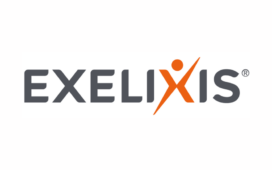AI stocks dominate the S&P 500, but this dominant force is missing from the index.
One of the most popular ways to invest in stocks is to buy the Vanguard S&P 500 ETF (VOO 0.00%). The Vanguard fund is popular for a reason: Its long record of closely tracking the S&P 500, combined with its low expense ratio, makes it a top S&P 500 index fund.
Investors have been well rewarded for patiently investing in an index fund like Vanguard’s in recent years. The S&P 500 is up roughly 70% in just 28 months since hitting the bottom of the bear market in October of 2022. Much of that growth was fueled by big tech companies closely tied to the widespread emergence of artificial intelligence (AI).
But not every great AI stock is included in the S&P 500, which means index investors could be missing out.
Many people know the S&P 500 consists of 500 of the largest companies in the total stock market. But S&P Global has several criteria beyond size that exclude some companies, even if they’re massive, trillion-dollar businesses. Specifically, the S&P 500 requires companies to have their headquarters and a plurality of their assets in the United States and be profitable on a GAAP basis in the most recent quarter and trailing-12-month period.
As a result, a company like Taiwan Semiconductor Manufacturing (TSM 1.03%) isn’t included in the index. But this brilliant AI semiconductor company still trades at a great price, and investors can easily add it to their portfolio alongside the Vanguard S&P 500 ETF.
Image source: Getty Images.
A dominant force in artificial intelligence
When industry-leading semiconductor companyz Nvidia (NVDA 2.63%) wants to create a new graphics processing unit (GPU), it doesn’t have the capability of actually producing that chip itself. It needs to outsource the manufacturing to another company with the facilities and technology to actually etch silicon wafers and package them. That’s where Taiwan Semiconductor Manufacturing Company, or TSMC, comes in.
TSMC works with chip designers to print their chips using its facilities and, more importantly, its proprietary processes. TSMC has spent heavily on research and development to create new processes that can place transistors closer together on silicon, increasing the power efficiency of each chip.
Sometimes TSMC will work closely with a customer to develop a new process for certain applications. For example, Nvidia’s newest GPUs, the Blackwell platform, use a custom process that increases the total number of transistors on the chip.
TSMC is one of just three chip manufacturers capable of producing the most advanced chips at scale. And it holds a commanding position in the overall chip manufacturing market, with over 60% market share. It’s the only company with the resources to dedicate to Nvidia or other big customers, including Apple and Broadcom.
Importantly, TSMC’s scale gives it more capital to invest in research and development, ensuring it maintains its technology lead. As a result, it should remain at the top of chip designers list when it comes to producing their most advanced chips for applications like GPUs for AI data centers or a system-on-chip for a smartphone. That further increases its available capacity, which it can use to cater to its biggest customers.
Management says the AI chip sales are just getting started
When TSMC released its fourth-quarter earnings results in January, it shared a very rosy outlook about its future. Management forecasts AI-related sales growth of 40% per year over the next five years. That should help produce 20% overall compound annual revenue growth for the business over the same period.
The company is spending heavily to facilitate that growth. It’s budgeting roughly $40 billion for capital expenditures in 2025, a 35% year-over-year increase. TSMC has historically been very smart about its capital expenditures, ensuring it doesn’t outspend its potential growth. Still, investors should be aware the semiconductor industry is very cyclical, and significant overhead costs can weigh on financial results during downturns.
It’s worth noting, however, that TSMC has the potential to benefit from growing AI chip demand no matter who designs those chips because of its unique manufacturing capabilities and scale. So, while many big tech companies are working to shift away from a reliance on Nvidia, they’ll still use TSMC to make their custom silicon for their AI servers.
So, TSMC presents a less volatile option than individual chip designers when it comes to investing in AI. At a valuation of just 23 times forward earnings estimates, it’s an absolute bargain. TSMC is far from the only big company excluded from the S&P 500, but it’s one of the most attractive large-cap stocks outside of the index right now.
Vanguard S&P 500 ETF investors who want to add the semiconductor stock to their portfolio might consider adding it such that its weight is on par with the rest of the holdings. TSMC’s market cap of roughly $1 trillion as of this writing would make it worth around 2% of the entire S&P 500. So, investors could simply shift 2% of their holdings in the index to Taiwan Semiconductor’s stock to ensure they get their fair share of the stock’s gains.
Adam Levy has positions in Apple and Taiwan Semiconductor Manufacturing. The Motley Fool has positions in and recommends Apple, Nvidia, Taiwan Semiconductor Manufacturing, and Vanguard S&P 500 ETF. The Motley Fool recommends Broadcom. The Motley Fool has a disclosure policy.




